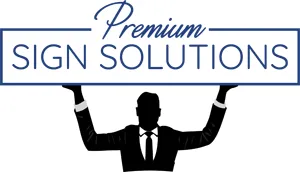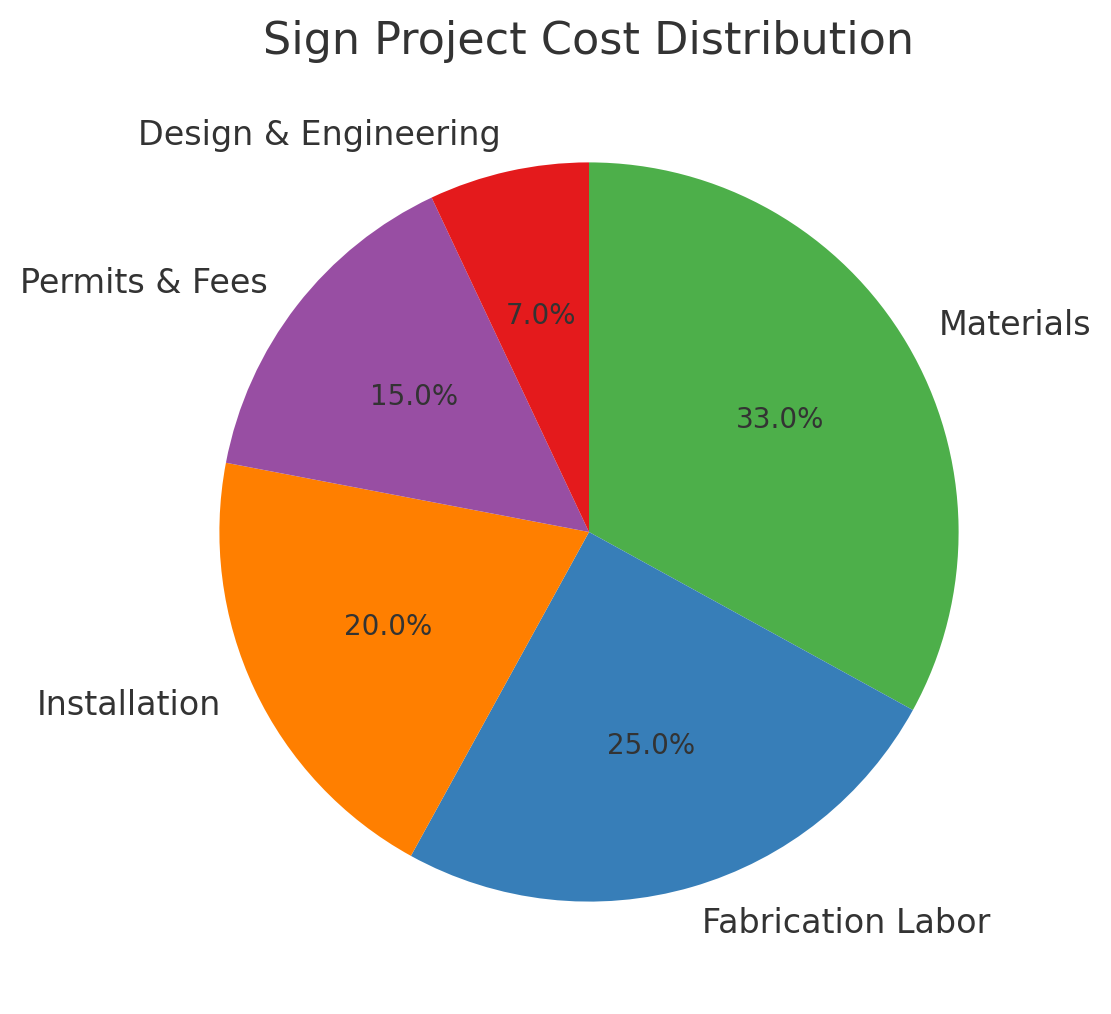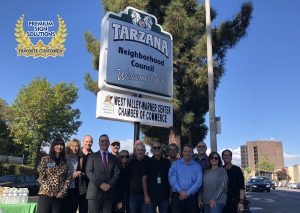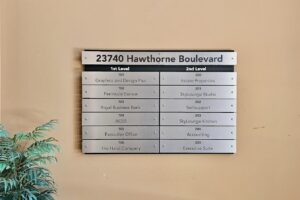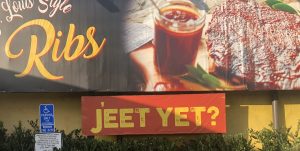A Guide to Business Signs Cost in LA? (2025 Guide)
Outdoor business signage in Los Angeles is one of the most important branding investments you can make. It attracts customers, guides them to your door, and communicates the quality of your business before anyone steps inside. But the real cost of a sign in LA is often misunderstood. Business owners frequently think of a single number – the fabrication price – when in reality, the full cost includes permitting, approvals, installation challenges, and long-term upkeep.
This guide breaks down the true price of business signs in Los Angeles, why it varies so widely, and how to budget smartly so you don’t get surprised halfway through the project.
What LA Business Owners Should Ask Before Buying a Sign
If you’re planning a sign in Los Angeles, don’t just ask “How much is the sign?”
Ask:
- What’s included in the estimate?
- How are permits, approvals, and installation handled?
- What materials and finishes are being used for durability?
A good sign partner will walk you through the whole picture upfront, saving you money and headaches later.
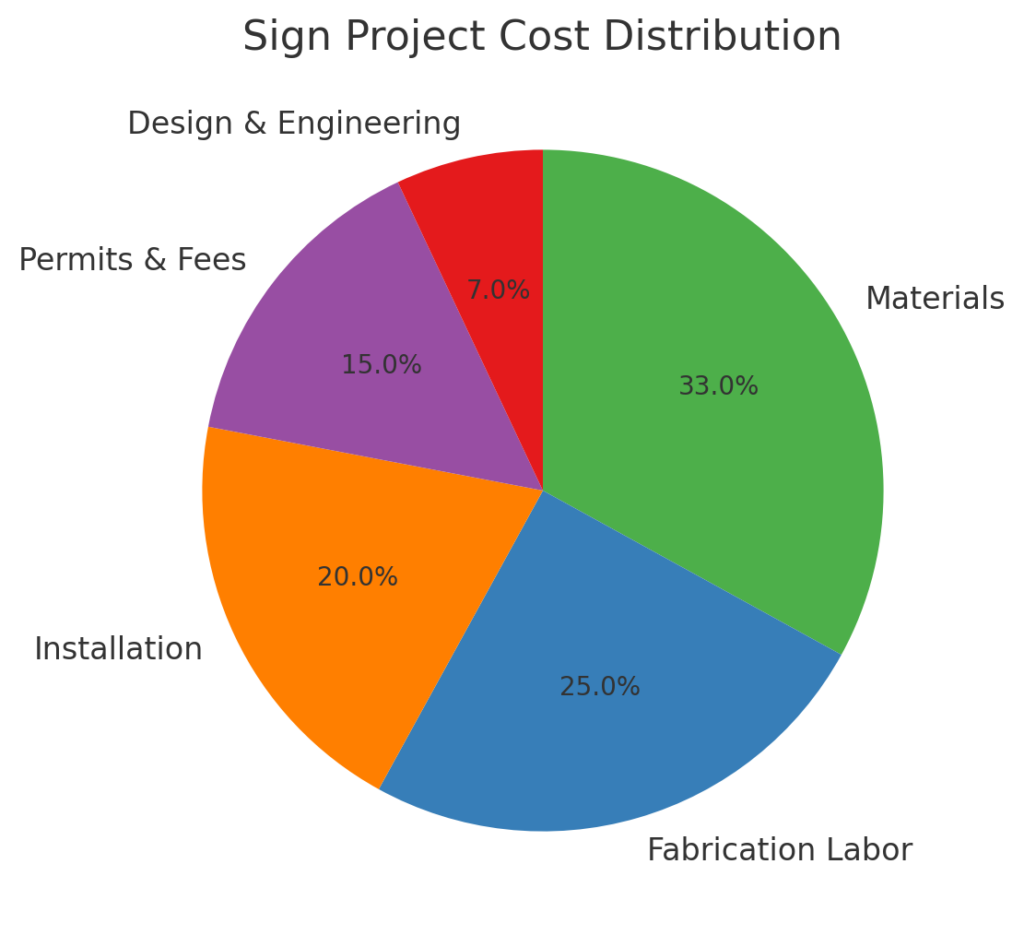
The Real Cost of Outdoor Business Signs in Los Angeles
Fabrication and Installation
The most visible cost is the actual design, materials, and labor to build and mount your sign. This can range widely:
| Sign Type | Typical Price Range (LA Market, 2025) | Notes |
| Vinyl Banner | $200 – $600 | Temporary, not code-heavy |
| Flat Acrylic/Metal Letters | $1,500 – $5,000 | Good for offices & retail |
| Channel Letters (Illuminated) | $4,000 – $15,000 | Popular storefront option |
| Monument Signs | $8,000 – $25,000+ | Complex installs, premium impact |
| Pylon Signs (Roadside) | $20,000 – $100,000+ | Engineering & structural costs high |
(Data compiled from LA County sign contractors, 2025 averages)
Permitting and City Fees
Los Angeles is known for some of the highest sign permitting costs in the country. Every sign must be reviewed by the Los Angeles Department of Building and Safety (LADBS).
- Average LA permit cost: $450 – $1,500 per sign (source: LADBS, 2024 data).
- Timeline: Permits often add 2–8 weeks to projects, longer if revisions are required.
Design and Engineering
Larger or illuminated signs require drawings, engineering calculations, or structural assessments. This step ensures the sign is safe and compliant with seismic code (a big factor in California).
- Typical design package: $500 – $2,000.
- Engineering review (for illuminated/structural signs): $1,000 – $3,500.
Landlord or Property Approvals
Especially in retail centers or leased spaces, landlords may have strict signage criteria. Submittals and revisions here often add both time and cost.
Hidden or Overlooked Costs
The “surprise” costs often frustrate business owners most. Examples include:
- Sign removal & wall repair: $500 – $2,000.
- Electrical work: circuits, timers, wiring upgrades: $1,000 – $4,000+.
- Structural upgrades: reinforcing walls/canopies if not sign-ready.
- Equipment rentals: cranes or lifts can add $750+ per day.
Ongoing Costs After Installation
A sign isn’t a one-and-done purchase.
- LED module replacement: every 5–7 years.
- Cleaning/maintenance: recommended 2x/year.
- Re-permitting: required if relocating or updating the sign.
Bottom Line: In Los Angeles, the “real cost” is often 30–50% higher than the fabrication quote once all fees, approvals, and logistics are added.
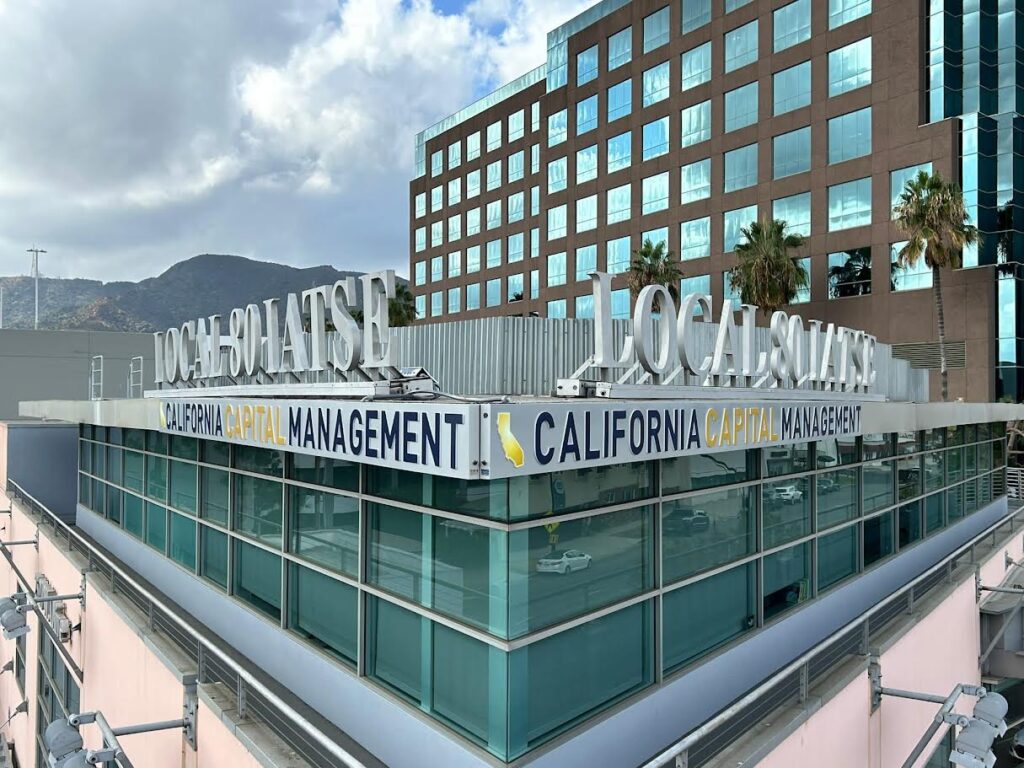
Your LADBS Permit Submission Checklist
Navigating the LADBS permitting process can feel overwhelming, but preparing the right documents upfront keeps projects moving. Here’s what the city typically requires for a complete submittal:
- Site Plan – Showing the lot lines, existing structures, and the exact location of the proposed sign.
- Elevation Drawings – Scaled drawings of the sign on the building, including materials, dimensions, and colors.
- Structural Calculations with Engineer’s Stamp – Required for larger or heavier signs to prove compliance with seismic safety codes.
- Owner or Lessee Consent – A notarized letter from the property owner, or a copy of the lease agreement with signage rights clearly stated.
- Energy Compliance Documentation – Title 24 calculations showing that any illuminated signs meet California’s energy-efficiency standards (LED modules, timers, or wattage limits).
Having these ready not only avoids costly delays but also increases the chance your permit is approved on the first submission. Read more about this in our permit process guide.
The LA Zoning Maze: Why Your Location Matters
In Los Angeles, the cost of a sign is heavily influenced by where your business is located. A sign on Hollywood Boulevard faces very different rules than one in a suburban strip mall. For example, businesses in Historic Preservation Overlay Zones (HPOZs) – such as Angelino Heights or Windsor Square – must submit designs to both City Planning and the HPOZ board. That means extra rounds of review, design revisions, and higher costs before the first piece of metal is even cut.
Other parts of the city, such as Downtown LA or Hollywood, fall under designated Sign Districts or Community Design Overlay (CDO) zones. These areas often have stricter design standards but sometimes allow larger or even digital signage, which can dramatically increase both opportunity and cost. On top of that, Los Angeles determines maximum sign size based on your building’s street frontage, not the size of your wall. Miscalculating this formula is one of the most common reasons permits are delayed or denied – and why an experienced partner who understands local code is essential.

Why Business Signs Cost What They Do (And Why They’re Worth It)
Signs Are Custom, Not Off-the-Shelf
Every building façade, material, and electrical setup is different. That means every sign must be engineered and fabricated uniquely. You’re not buying a commodity – you’re commissioning a branding tool that works 24/7.
Breaking Down Where the Money Goes
| Cost Category | % of Typical Budget | What It Covers |
| Materials | 25–40% | Metal, acrylic, LEDs, finishes |
| Fabrication Labor | 20–30% | Welding, painting, assembly |
| Installation | 15–25% | Site prep, mounting, electrical |
| Permits & Fees | 10–20% | City applications, inspections |
| Design & Engineering | 5–10% | Drawings, code compliance |
The Mistakes That Drive Up Costs
Underbudgeting from the Start
The most common mistake is only budgeting for the fabrication quote. When permits, electrical, and approvals aren’t factored in, surprise costs force businesses to scale back or delay.
Choosing the Lowest Bidder
A “budget sign” often ends up costing more in the long run:
- Non-code-compliant signs rejected by the city.
- Cheap materials fading or failing within a year.
- Unsafe wiring creating liability issues.
- Building damage from poor installation.
Case in Point: A 2024 Sign Research Foundation study found that businesses that chose professional, full-service fabricators saved an average of 27% in total project costs compared to those who went with the lowest bid and had to redo work later.
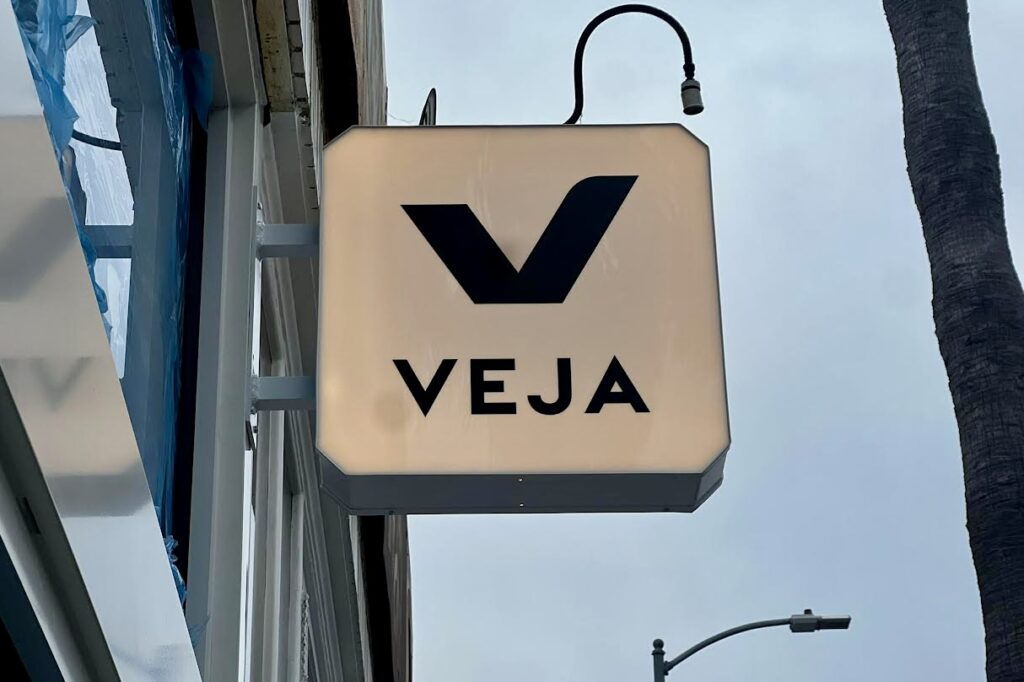
Investing More Upfront = Long-Term Savings
One client nearly went with a stripped-down bid but instead chose a transparent estimate that included permits and electrical.
The result:
- Approved on the first city submission.
- Installed without building damage.
- Materials still look new years later.
They spent ~15% more upfront but saved thousands in rework and delays.
The $1,500 vs $15,000 Sign Difference
- $1,500 sign: small, flat, non-illuminated, minimal impact.
- $15,000 sign: illuminated, engineered, long-lasting, and designed for branding impact.
The latter isn’t just a sign – but rather a marketing asset, working 24/7 for years.
Material Durability: Investing Against the LA Sun & Smog
Los Angeles’s climate is deceptively tough on signage. Between the intense UV exposure, smog, and coastal salt air, materials that look great in a catalog can deteriorate quickly if they’re not chosen with long-term durability in mind. That’s why the material decision is more than an aesthetic choice – it directly affects cost over the lifetime of your sign.
Here’s how the most common materials stack up in LA conditions:
| Material | Pro in LA | Con in LA | Cost vs. Aluminum |
| Aluminum | Lightweight, resists rust, widely available. | Needs premium paint or coating to prevent fading after 5+ years. | Baseline |
| Stainless Steel | Extremely durable, ideal for coastal locations like Santa Monica or Long Beach. | Higher upfront cost, heavier (requires stronger mounting). | 2×–4× |
| Plexiglass/Acrylic | Excellent for illuminated signs, sleek look. | Lower grades yellow, fade, or crack in prolonged UV. | 1×–2× |
| Premium Vinyl | Affordable for overlays/wraps. | Must have UV laminate to prevent peeling and fading. | Lowest |
Choosing wisely can save thousands in replacements and repairs – especially if your business is near the beach or in high-sun areas like the Valley.
The Hidden Cost of Maintenance
Even the best-built signs need upkeep. In Los Angeles, ongoing maintenance often includes power supply replacements, reprogramming or replacing LED modules, repainting or refinishing faded surfaces, and repairing vandalism damage. A small LED power supply can run $300 to replace, while repairing graffiti or refinishing metal can cost upward of $1,000. Factoring in an annual maintenance budget is smart – not only for the sake of appearances, but also to keep your sign compliant with city codes over the years.
The Measured Return on Signage
While it’s easy to think of a sign as an expense, the reality is that it’s one of the most cost-effective marketing tools a business can buy. According to the Digital Signage Federation, businesses report an average sales uplift of 31.8% after installing quality signage. And 75% of consumers say they have recommended a business solely based on its sign.
Unlike digital ads, which disappear the moment you stop paying, a sign is a fixed asset that works for your brand 24/7. A high-quality sign built to last 10–15 years can cost far less per impression than almost any other marketing channel. The takeaway? Spending a little more upfront not only avoids costly mistakes but delivers measurable returns year after year.
Pro Tip: Negotiate Your Signage Rights Upfront
If your business is in a leased space, signage can become a hidden battleground. Many landlords have strict requirements for sign style, placement, or even illumination type – and those restrictions can add unexpected costs late in the process. One way to avoid this is to negotiate signage allowances into your lease before you sign it. That means clarifying where the sign can go, how large it can be, and what types of materials or lighting are acceptable. This single step can save thousands in redesign fees and weeks of lost time down the road.
Get Your Signage Partner in Los Angeles
The real cost of a business sign in Los Angeles isn’t just about fabrication – it’s about navigating zoning, city approvals, landlord requirements, materials, installation, and long-term maintenance. That’s why having an experienced partner matters.
At Premium Sign Solutions, we’ve helped businesses across Los Angeles – from Downtown to Santa Monica to the Valley – get signage that not only meets code but also elevates their brand for years to come. From concept to permit approval to installation, our team handles the details so you can focus on running your business.
If you’re planning your first sign or upgrading an existing one, let’s talk. We’ll walk you through the process, give you a transparent estimate, and make sure your investment pays off long-term.
Contact us today to start your signage project in Los Angeles.
